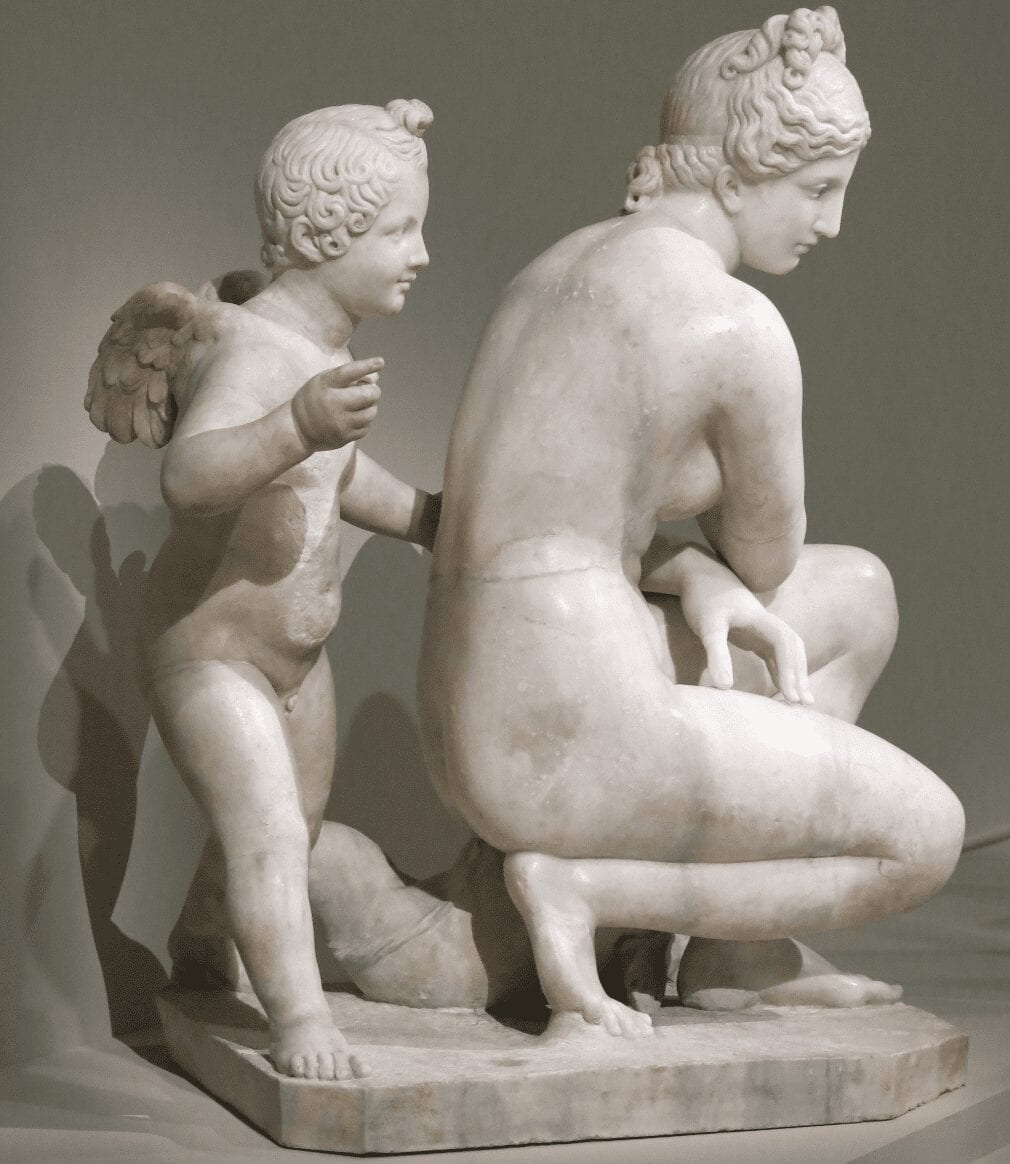Opinion: Examining the faces of the word ‘love’
Love has more than one meaning depending on the culture. In Ancient Greek culture, there are three words that describe the different types of love.

Aphrodite and Eros at the Hermitage. Photo courtesy of Creative Commons.
Love is visual. It floats between the whispers of couples and the laughter of children and parents. It lifts up the hands of those in dire times and wipes away tears of a friend. We celebrate love in our culture and it comes in many forms. It has a day dedicated to it. To the Ancient Greeks, these depictions of love would have been ridiculous.
The English language has only one word to describe the different types of love. The Greeks had several, but three capture the most focus: Philia, Agape and Eros. Philia is an affectionate love between friends and family. Agape represents a respectful love with care and esteem. The New Testament now depicts Agape as a love for God. And Eros?
“You want to avoid that kind of emotion,” University of Tennessee, Knoxville Senior Classics professor Jessica Westerhold said. “It’s dangerous.”
Eros and Cupid are both gods of love, but are from different mythologies: Eros is Greek and Cupid is Roman. Cupid is the one that shoots love-filled arrows. On the other hand, Eros is a sexual god. The Greeks feared Eros’s love.
“Eros is something that drives people to do things they don’t want to do. The gods, Aphrodite and Eros, often use it as punishment,” Westerhold said.
This type of love was an external force from the gods. It was destructive. The use of it by Aphrodite started the Trojan War. Like a sickness festering through the veins, it could not be controlled. Yet images of this type of love with the two gods decorates the world alongside heart-shaped chocolate.
As Westerhold put it, the change from a purely sexual love into a romantic one was not until the fourth century B.C. Its shift can be seen in plays such as “The Woman from Samos” by Menander in which the association becomes positive.
Each meaning of Eros leaked into the English language, and they are captured in the single word ‘love,’ along with Philia and Agape. This can lead to miscommunication and misinterpretations of the word, which according to UT Classics professor Robert Sklenar is not necessarily a bad thing.
“The Greeks used different words depending on what they wanted to emphasize, but I don’t think that limited their range of expression,” Sklenar said. “Similarly, the fact that we have one word that covers as much ground as our word ‘love’ does, I don’t think that inhibits us.”
The idea goes back to the foundations of English. The Greek language relies on the individual words to convey meaning; English needs context.
“In our daily lives, we often use the word ‘love’ without giving a whole lot of thought to the context in which we are using it. We are essentially letting the context do the work for us,” Sklenar said.
The scholars and poets of the fifth century Athens preserved most of the texts. This limits the knowledge about other Greek city-states, such as Sparta, along with their citizens’ opinions on the matter.
“The nature of the surviving evidence is kind of skewed. It’s skewed toward the surviving literary sources, and that I think is probably giving us a distorted view of the way the language is actually used,” Sklenar said.
However, this also means the female perspective is almost non-existent or in fragments.
“Women are embodied. They were reduced to their reproductive capacity. Women probably didn’t feel this way, but our writers are primarily male,” Westerhold said. “Women weren’t supposed to have any feelings.”
The work from the poet Sappho represents most of what remains from the female perspective of love in the modern day. Even then, the poet describes the effects like an illness, begging Aphrodite for help in the emotion.
Love is visual. It can be seen in different ways and letters. It is celebrated. It is feared. It can be seen externally everywhere as something only from the gods.
Written by Kayli Martin
Edited by Ciera Noe and Grace Goodacre
Featured image courtesy of Creative Commons



